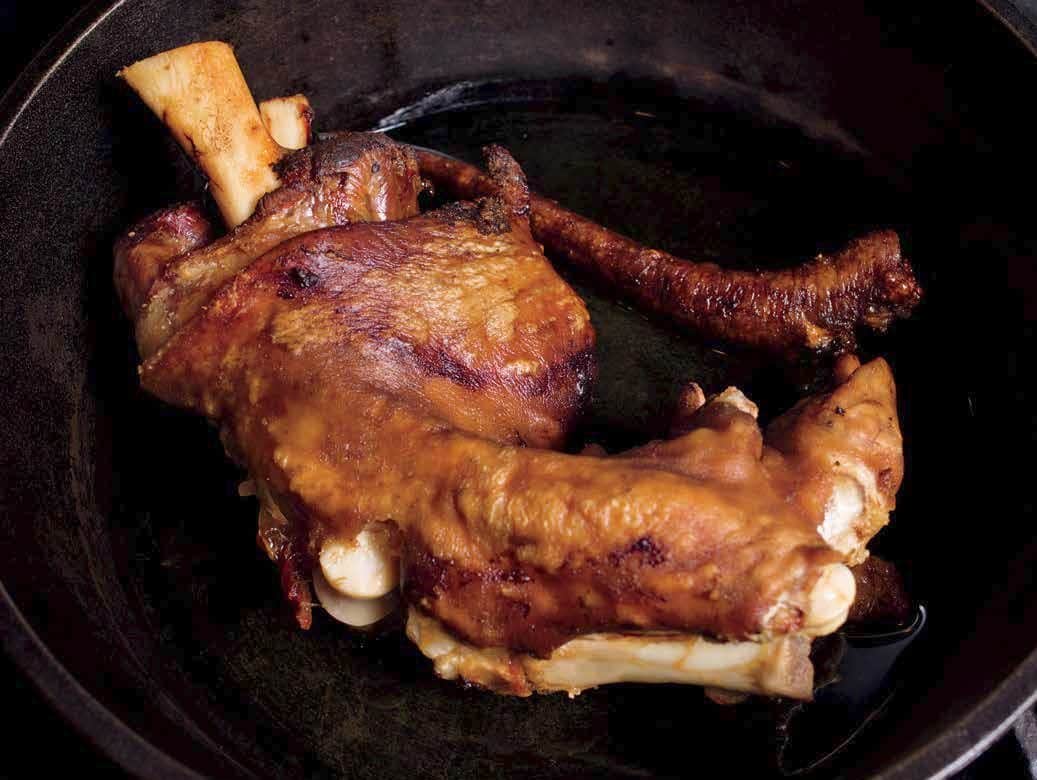Demystify the process of choosing and using various pork cuts
When it comes to pork, the variety of cuts available can seem overwhelming. Pork is a versatile meat, offering options that range from tender and lean to rich and fatty, suitable for a range of cooking methods including roasting, grilling, braising, and frying.
Pork Shoulder (Also Known as Pork Butt or Boston Butt)
The pork shoulder is a robust cut with a good amount of fat and connective tissue. It’s ideal for slow cooking methods such as braising, slow roasting, or smoking. This cut is often used for pulled pork due to its ability to become tender and flavorful after long hours of cooking. When shopping for pork shoulder, look for pieces with a deep pink color and some marbling. To cook, seasoning generously and cooking slowly will yield tender, fall-apart meat that’s full of flavor.
Loin
The Pork Loin is a large, lean cut that runs along the back of the pig. It can be bought whole or divided into smaller cuts, including pork chops (loin chops, rib chops) and the tenderloin. The loin requires careful cooking to avoid drying out due to its low fat content. It’s well-suited to roasting or grilling, with a simple seasoning of salt, pepper, and herbs. The tenderloin, being the most tender part, cooks quickly and is best suited for fast, high-heat cooking methods like grilling or pan-searing. Because of its low-fat content, it’s best cooked quickly over high heat to maintain its tenderness. It’s a good candidate for marinating to enhance flavor.
- Tenderloin and Loin Interchange: You can substitute one for the other, but it requires adjustments in cooking time and technique due to the differences in size and fat content. Tenderloin cooks quickly; overcooking can lead to a dry, tough texture. Loin takes to slower cooking methods well, thanks to its fat content that keeps it moist.
Belly
Pork belly is the cut from which bacon is made, but it can be used for much more. Rich in fat and flavor, it’s excellent for slow roasting, braising, or making porchetta. When cooking pork belly, aim to render the fat slowly, which will result in a tender, melt-in-your-mouth texture. The skin can be scored and roasted to make crispy crackling.
Ribs
Pork ribs come in several styles, including baby back ribs, spare ribs, and St. Louis-style ribs. Ribs are best cooked slowly, either smoked, grilled, or baked at a low temperature, which allows the fat to render and the meat to become tender. A dry rub or marinade can add flavor, with many opting to finish them with a glaze or barbecue sauce during the last minutes of cooking.
-
Baby Back Ribs: Come from the top of the rib cage between the spine and the spare ribs, below the loin muscle. They are shorter, curvier, and leaner than spare ribs and are known for their tender meat. Baby back ribs are often favored for grilling and roasting because they cook relatively quickly.
-
Spare Ribs: Are taken from the belly side of the rib cage, below the baby back ribs, extending to the breastbone. Spare ribs are flatter, longer, and have more fat than baby back ribs, contributing to their rich flavor. They contain more bone and connective tissue, making them ideal for slow-cooking methods like smoking or slow-roasting to achieve a tender finish.
-
St. Louis-Style Ribs: Are a specific cut of spare ribs where the sternum bone, cartilage, and rib tips are removed to create a rectangular-shaped rack. This trimming makes St. Louis-style ribs more uniform in shape, which can be easier to cook and serve. They offer a good balance of meat and fat, making them well-suited for barbecuing and smoking.
Ham
Ham refers to the pork leg that has been cured, smoked, or fresh. Fresh ham is similar to a pork roast and can be roasted whole, benefiting from long, slow cooking to ensure it’s fully cooked through without becoming dry. Cured or smoked ham is often pre-cooked and requires reheating. When selecting ham, consider the size you need based on your serving requirements, and whether you prefer bone-in (which can add flavor) or boneless for easier carving.
Picnic Ham
Coming from the lower part of the shoulder, the picnic ham (or picnic shoulder) is similar to pork shoulder but has more bone and skin. It’s excellent for slow roasting or smoking and is often used in dishes that require long cooking times for tenderization. It’s a less expensive cut that, when cooked properly, can offer deep flavor and succulence.
Cooking Tips
- Season Well: Pork benefits from a good seasoning. Salt and pepper are essentials, but don’t hesitate to use herbs, spices, and marinades to add depth of flavor.
- Temperature Matters: Use a meat thermometer to ensure pork is cooked safely without overcooking. The USDA recommends cooking pork to an internal temperature of 145°F (63°C), followed by a three-minute rest.
- Rest Your Meat: Allowing pork to rest after cooking ensures juices redistribute throughout the meat, resulting in a more tender, flavorful dish.
- Match Cooking Method to Cut: Choose the right cooking method for your cut of pork. Lean cuts like tenderloin do well with quick, high-heat cooking methods, while fattier cuts like shoulder and belly benefit from slow cooking.
The secret to delicious pork lies in the balance of seasoning, cooking method, and the cut’s natural flavors.
About the author
Editorial Staff
Contributor

